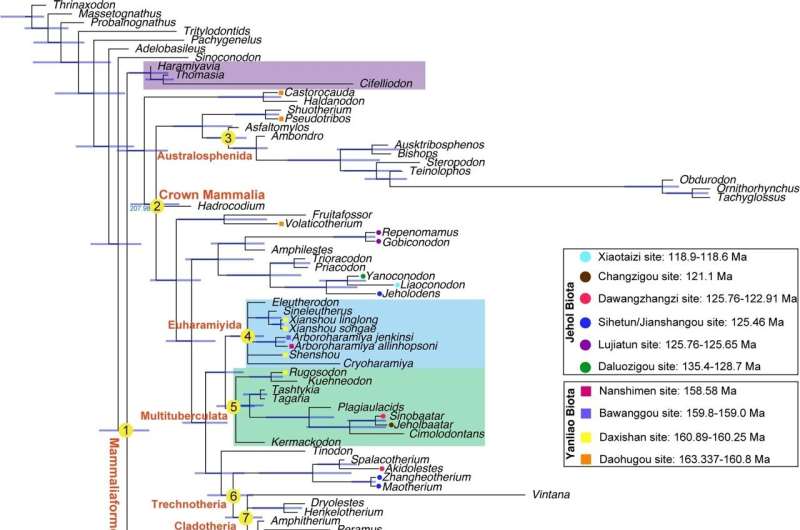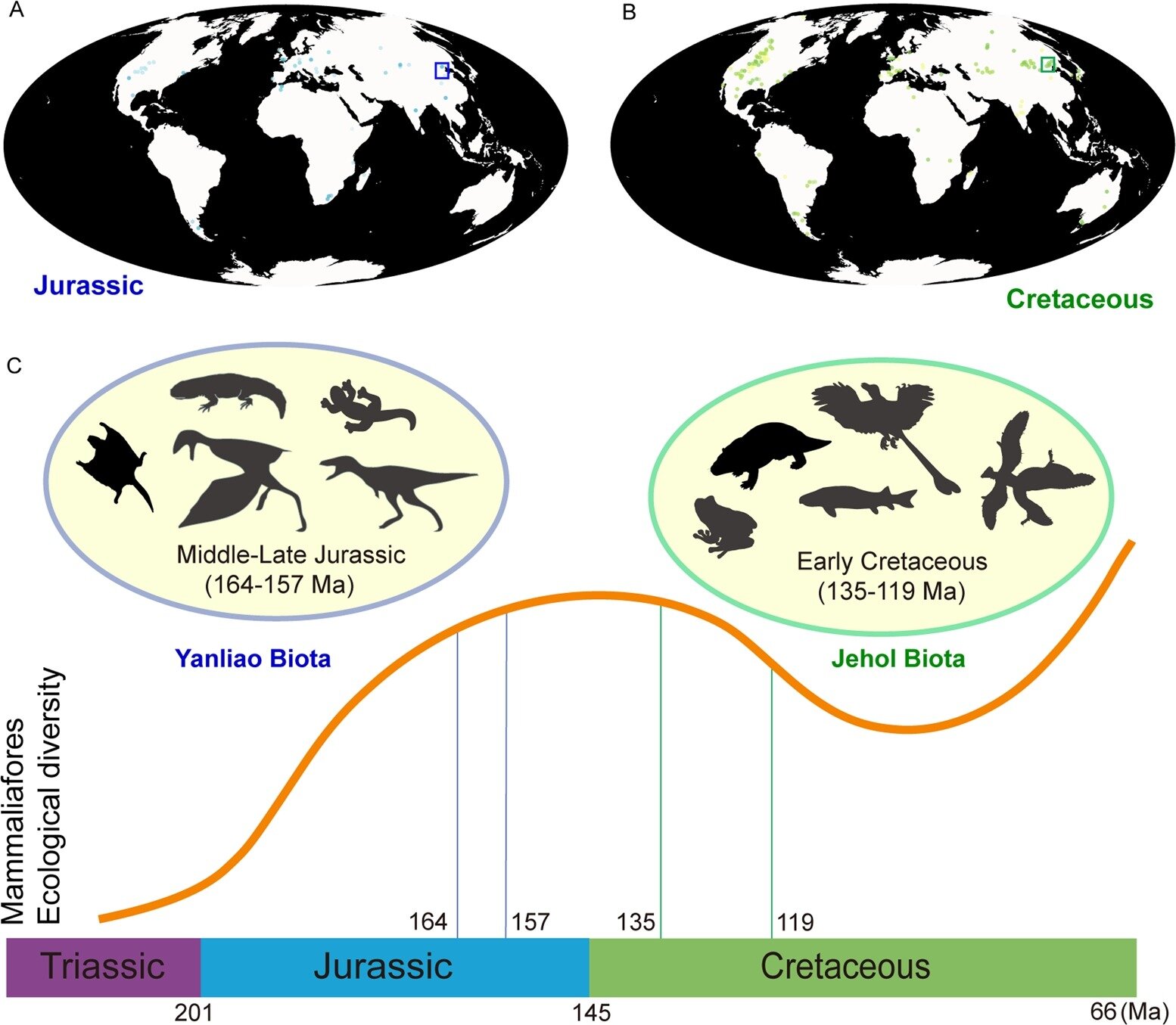China’s Yanliao Biota, a collection of fossils preserved in northeastern China dating back to the Middle to Late Jurassic period (174 to 145 million years ago), provides valuable insights into the evolution of vertebrates. The exceptional preservation of insects, feathered dinosaurs, transitional pterosaurs, as well as early representatives of salamanders and mammals, makes this biota unique and significant.
Understanding the precise timing of evolutionary events during these periods is crucial for uncovering the diversification of life over time. Scientists have employed volcanic ash layers, known as tuff, to accurately date the fossil-bearing units, as reported in Earth and Planetary Science Letters.
By creating a man-made cave in sedimentary rocks that were deposited in a lacustrine environment (associated with a lake), researchers located these sites in the Liaoning and Hebei Provinces of northeastern China. The ash from a volcanic eruption fell into the lake and was not subsequently disturbed, providing scientists with reliable layers that aid in precise fossil dating.
The researchers at the Institute of Vertebrate Paleontology and Paleoanthropology in China, along with their collaborators, utilized a technique called cathodoluminescence. This involved polishing grains of a crystal, exposing the center, and using a special microscope to examine them. This microscope utilizes light to reveal specific characteristics of the crystal, while cathodoluminescence takes advantage of electron bombardment to produce luminescence and emit photons at different wavelengths. Since the crystals were remarkably well-preserved, the researchers could confirm that they had not been transported from their original location.
These sedimentary layers were dated using 129 grains of a crystal called zircon, with measurements taken for levels of uranium, thorium, and lead. This dating technique, known as U-Pb radiometric dating, is based on the principle that uranium decays into a more stable form, namely lead, over time. The time taken for uranium to decay by half is referred to as its half-life, and this property allows scientists to determine the number of half-lives that have occurred since the element’s formation. For instance, there are two isotopes of uranium used for radiometric dating—uranium-238 with a half-life of 4.5 billion years, and uranium-235 with a half-life of 704 million years. Based on these isotopes, the researchers have dated the Yanliao Biota to be between 164 and 157 million years old.

Within the sampled sections, six salamanders were discovered and dated to 164 million years ago. The researchers assert that this represents one of the earliest instances of diversification among Caudata, a group of amphibians. Membrane-winged dinosaurs were found in sedimentary rocks dating back to 164 to 160 million years ago, aligning with previous studies on the development of flight in theropod dinosaurs. The scansoriopterygids found at these sites are the earliest known gliding flyers. Euharamiyidans, some of the earliest mammal ancestors, were dated to units aged 163 to 158 million years old.
This information was integrated into a technique known as Bayesian tip-dated phylogeny to establish the origin date of true mammals prior to these early mammal ancestors. Software was utilized to construct a complex “family tree,” grouping together those with similar characteristics and revealing evolutionary patterns.
The researchers determined that the root of mammalian evolution extends back to the Late Triassic period, around 208 million years ago, with subsequent diversification occurring during the Jurassic period. This supports the long-fuse model, which suggests a gradual evolutionary process, in contrast to the explosive model advocated by some researchers who propose that early mammals originated in the Middle Jurassic and rapidly diversified. While the researchers endorse the long-fuse model, they emphasize a delay in diversification until the Middle Jurassic, suggesting the existence of additional hypothetical mammal ancestors yet to be discovered as scientists continue to explore the remarkable history of life on Earth.
More information:
Zhiqiang Yu et al, Temporal framework for the Yanliao Biota and timing of the origin of crown mammals, Earth and Planetary Science Letters (2023). DOI: 10.1016/j.epsl.2023.118
Denial of responsibility! TechCodex is an automatic aggregator of the all world’s media. In each content, the hyperlink to the primary source is specified. All trademarks belong to their rightful owners, and all materials to their authors. For any complaint, please reach us at – [email protected]. We will take necessary action within 24 hours.

Jessica Irvine is a tech enthusiast specializing in gadgets. From smart home devices to cutting-edge electronics, Jessica explores the world of consumer tech, offering readers comprehensive reviews, hands-on experiences, and expert insights into the coolest and most innovative gadgets on the market.
Denial of responsibility! TechCodex is an automatic aggregator of Global media. In each content, the hyperlink to the primary source is specified. All trademarks belong to their rightful owners, and all materials to their authors. For any complaint, please reach us at – [email protected]. We will take necessary action within 24 hours.


